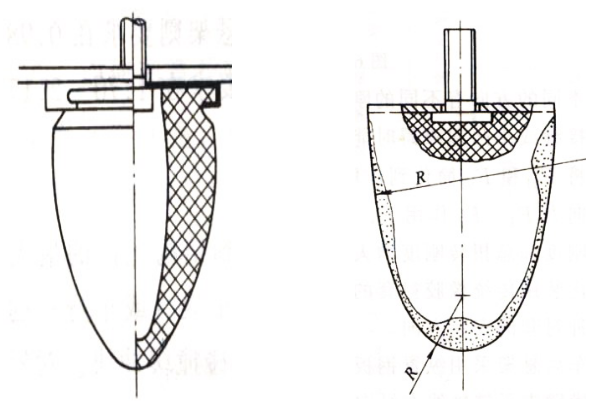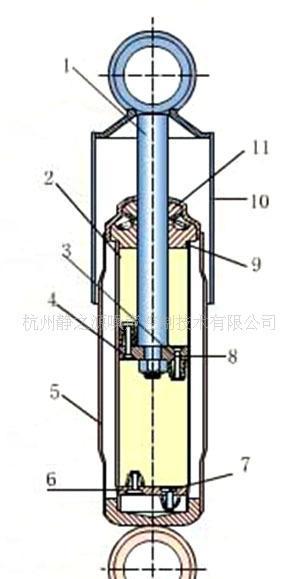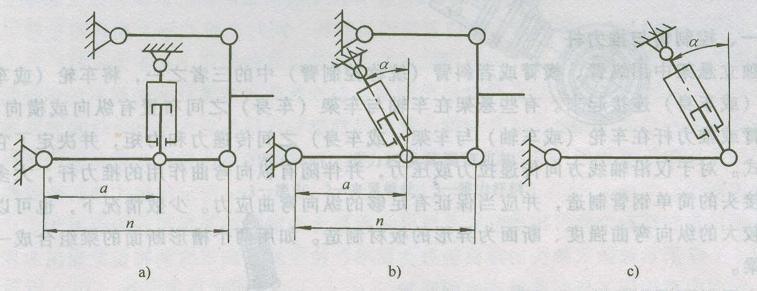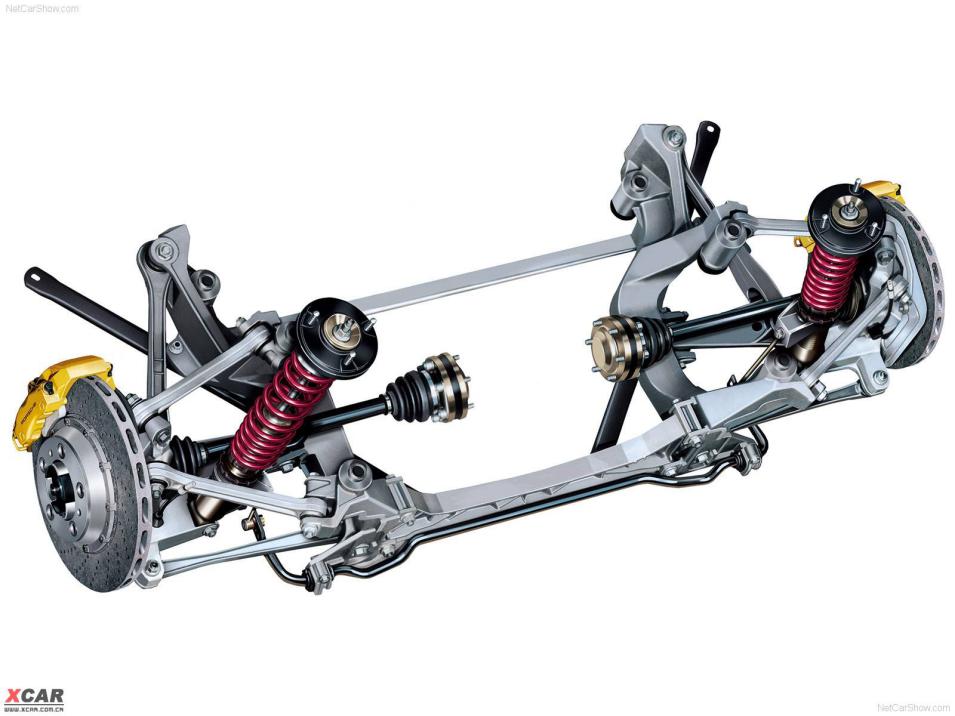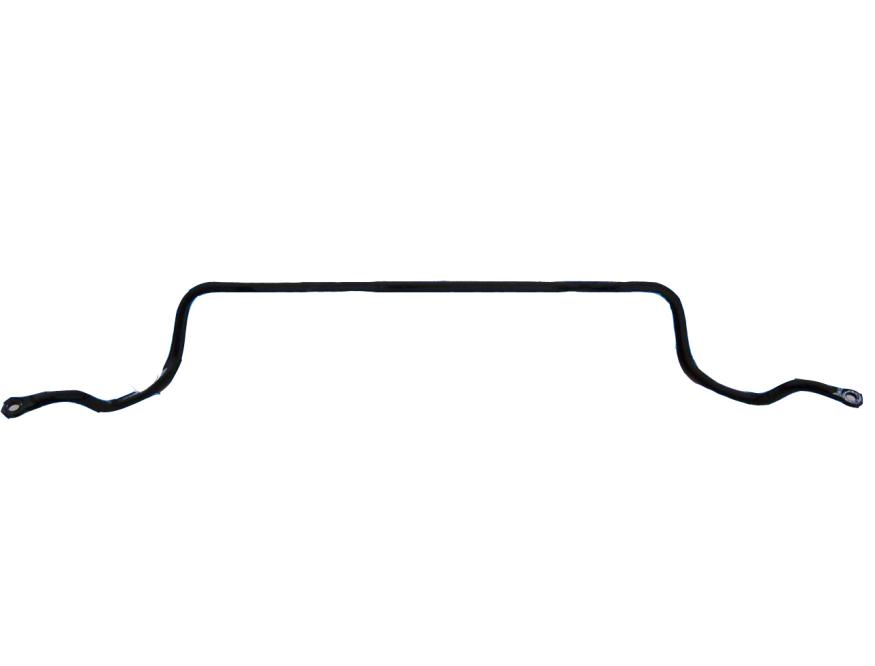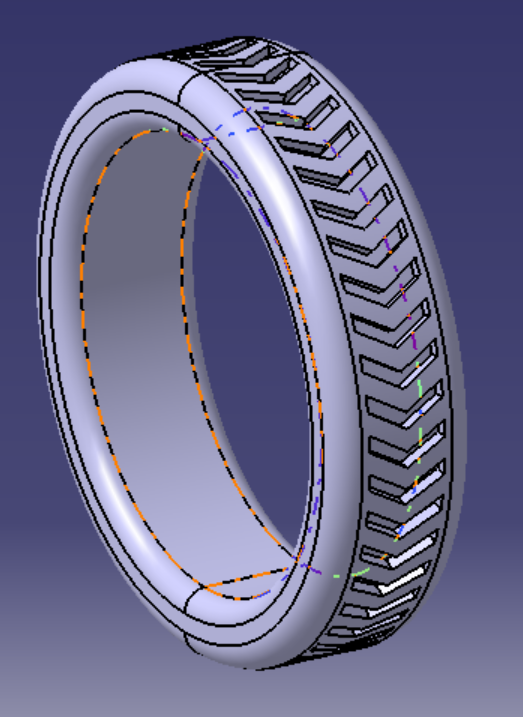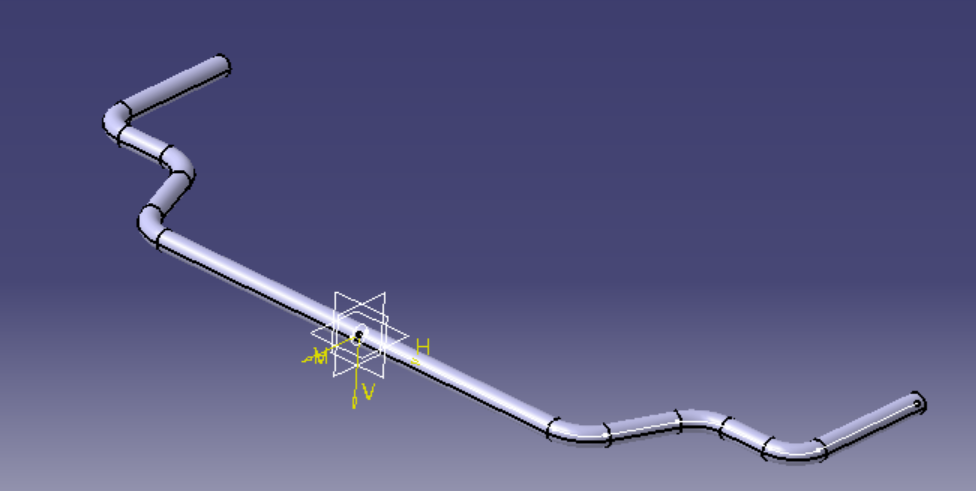中型轿车后悬架设计毕业论文
2020-04-09 03:04
Graduation Design (Dissertation) of Wuhan University of Technology
Medium-sized car rear suspension design
College: International Education College
Specialty amp; Class: Automobile GJ1401
Student name: Yangxuefei Liu
Tutor: Huiru Guo
Abstract
With the rapid development of science and technology, automotive technology has advanced by leaps and bounds. In recent years, people have the higher and higher requirements for the stability and comfort of their cars, leading to higher requirements for the suspension system of automobiles. As the comprehensive index is too rigid and the multi-link independent suspension with various advantages such as manipulation and comfort is taken into consideration, it is now increasingly favored by consumers. However, the multi-link independent suspension has been used only for luxury cars for a number of years, or for relatively mid- to-high class cars. This is due to its complex structure, high cost, and good comfort characteristics. The automobile manufacturing technology continues to advance, and the production that cost of parts and components is gradually decreasing. Major automobile manufacturers have begun to use this kind of complex but high-performance suspension to build more equipment on mid-to-low-end models to reach and elevate the vehicle during driving. The purpose of comprehensive performance, and thus stand out in the same class of vehicles, to obtain a differential advantage. The BMW 3 Series rear suspension system-a multi-link independent suspension that I designed this time is to satisfy people's needs and uses .
The main contents of this design include: BMW 3 Series rear suspension design, rear suspension using the current more mainstream multi-link independent suspension. The shock absorber uses a two-way acting hydraulic shock absorber and performs parameter calculations. Then, the structure of the guide mechanism and the stabilizer bar is calculated and the strength check calculation is performed. The CATIA modeling software used models the parts of the multi-link independent suspension and assembles the suspension.
The multi-link independent suspension system used in my design is being fully applied to mid-sized vehicles. With the reduction of costs, this suspension is also becoming the optional suspension for mid- and- low-end models. The CATIA software's modeling and simulation optimization analysis of the suspension system verified the excellent performance of the multi-link independent suspension. Therefore, the suspension system designed this time has a very wide range of development potential.
Keywords: multi-link; independent suspension; CATIA; simulation analysis;
Contents
Introduction 5
Chapter 1 Overview 7
1.1 Introduction of Suspension System 7
(1) Elastic components 8
(2) Shock absorber 8
(3) stabilizer bar 9
(4) Guide mechanism 9
1.2 Classification of suspension systems 10
1.2.1 Non-independent Suspension 10
1.2.2 Independent Suspension 10
1.3 auxiliary components 14
1) Transverse stabilizer 14
2) buffer block 14
Chapter 2 Overall Design of Suspension Parameters 16
2.1 The main technical parameters 16
2.2 Frequency Selection and Calculation 17
2.3 Suspension Stiffness Selection and Calculation 17
2.4 Suspension static deflection 18
2.5 Suspension Dynamic Deflection 18
2.6 Summary of this chapter: 15
Chapter 3 Design Calculation of Elastic Components 20
3.1 Spring diameter and wire diameter 20
3.2 Number of spring turns 20
3.3 Spring pitch p 21
3.4 Spring free height H0 and full load height Hn 21
3.5 Spring Spiral Lead Angle 22
3.6 Coil spring stability check: 22
3.7 Summary of this chapter: 23
Chapter 4 Design of Suspension Guide Mechanism 24
4.1 guide mechanism design requirements 24
Chapter 5 Shock Absorber Design 25
5.1 Vibration Absorber Introduction 25
5.2 Selection of main performance parameters of shock absorber 26
5.2.1 Selection of relative damping coefficient ψ 26
5.2.2 Shock absorber damping coefficient δ 27
5.2.3 Determination of the maximum unloading force F0 27
5.2.4 Main dimensions of cylinder damper 28
5.2.5 Summary of this chapter 29
Chapter 6 Design of Lateral Stability Bars 30
Chapter 7 3D Modeling of Suspension 32
Conclusion and Outlook 36
Acknowledgment 37
References 38
Introduction
With the rapid development of science and technology, automotive technology has advanced by leaps and bounds. In recent years, people have higher and higher requirements for the stability and comfort of their cars, leading to higher requirements for the suspension system of automobiles. . The suspension determines and affects the ride comfort of the vehicle, handling stability and ride comfort.
In this design ,the model BMW Brilliance 3 is a medium-sized vehicle which is launched by the Brilliance BMW Joint Venture on the basis of the original BMW 3-series just for the Chinese market. The market price is between 300,000 and 400,000. Its benchmark model is Mercedes-Benz C-class, Audi. A4. Undoubtedly, they collectively chose the multi-link independent suspension as the rear suspension of the model car. Multi-link independent rear suspension is mainly composed of connecting rod, shock absorber and damping spring. Its connecting rods are larger than normal suspensions, and conventionally, they generally hang four-link or more link structures, and are therefore called multi-links. Suspension structure and performance parameters will directly affect the dynamic performance of the car, including the three aspects of the ride comfort, handling stability and comfort of the vehicle. Therefore, for the design of medium-sized vehicles, special attention should be paid to the structural selection of the car suspension. And parameter setting and tuning of suspension.Choosing a suitable suspension for the car can reduce the difficulty of research and development of the car while reducing the development cost of the car while ensuring the performance of the car. It is a balance between cost and function. Previously, multi-link suspension was relatively complicated, material cost, and Ramp;D. Experimental costs and manufacturing costs are much higher than those of other types of suspensions, and they occupy a large amount of space. This leads to the use scenarios of medium to large cars and luxury cars. However, with technological innovations, market needs, and increased competition, major manufacturers are gradually decentralizing multi-link suspensions to medium-sized cars and small cars. The functional characteristics of the multi-link suspension include: due to the large number of connecting rods, it is possible to ensure that the verticality between the wheel and the ground is as small as possible to reduce the tilt of the vehicle body, thereby ensuring the tire grounding performance.
As a popular trend in automotive research, there are many journals or papers on suspension, but there are few domestic works on multi-link independent suspension systems. Whether it is network resources or library paper resources, there are only a handful of references available.
Chapter 1 Overview
1.1 Introduction of Suspension System
Suspension is the general term for all force transmission and connection devices between the frame (or load-bearing body) and the axle (or wheel) of a car. Its role is to transmit force and force torsion between the wheel and the frame. And buffer the impact force transmitted from the uneven road surface to the frame or the car body, and attenuate the vibration caused thereby to ensure that the car can run smoothly.The main function of the suspension is to transmit all forces and moments acting between the wheel and the frame (or body), and to mitigate the impact of the vehicle when driving over an uneven surface and to attenuate the vibration of the bearing system caused thereby. Ensure the smooth running of the car. To this end, it is necessary to provide an elastic connection between the wheel and the frame or body, relying on elastic elements to transfer the vertical load between the wheel or axle and the frame or body, and rely on its deformation to absorb energy to achieve the purpose of buffering. After the elastic connection, the car can be regarded as a vibration system consisting of suspended mass (ie sprung mass), unsprung mass (unsprung mass) and spring (elastic element), bearing from uneven road surface, aerodynamics and drive train. Engine motivation. In order to rapidly attenuate unnecessary vibrations, damping elements, ie shock absorbers, must also be included in the suspension. In addition, the connection devices in the suspension that ensure that all forces and moments between the wheels and the frame or the body are reliably transmitted and determine the displacement characteristics of the wheels relative to the frame or the vehicle body are collectively referred to as guide mechanisms. The guide mechanism Jedi has changed the movement of the wheel's beating and the change of the wheel alignment, together with the position of the front and rear roll center and the trim center of the vehicle, which greatly influences the steering stability and anti-tilt ability of the vehicle. . In some suspensions there are also buffer blocks and stabilizer bars.
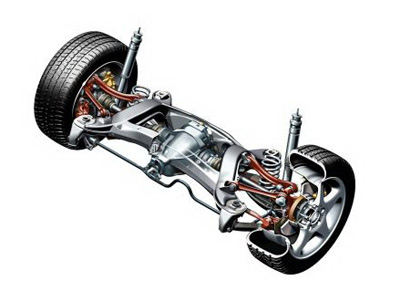
以上是毕业论文大纲或资料介绍,该课题完整毕业论文、开题报告、任务书、程序设计、图纸设计等资料请添加微信获取,微信号:bysjorg。
相关图片展示:
